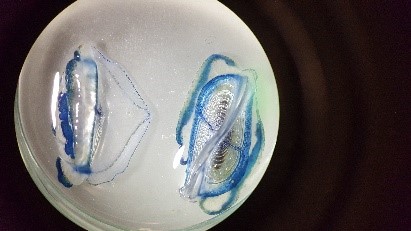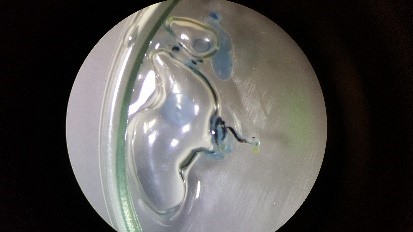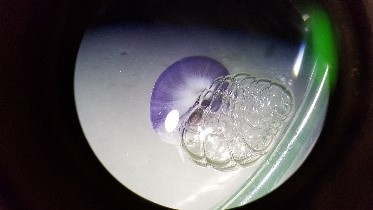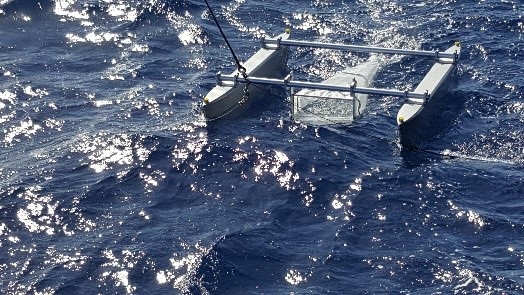In our search for microplastic we deploy the neuston1 catamaran. Its net collects the surface water and filters it through a net of defined pore-size, 300 µm in our case. In order to collect a sample it is let down into the sea and then towed next to the vessel for several minutes at a low speed, we usually go with 2,5 knots. A flow-meter in the opening allows us to calculate the collected water volume in sample evaluation. After towing the catamaran is heaved back on deck, rinsed, and the sample is retrieved in a small sample container, called cod end, at the end of the net. That sample can then be sorted to find microplastics from the sea surface.
Of course the catamaran does not only collect plastics. The surface layer is teaming with living phytoplankton, usually too small to be seen from aboard the vessel. There are jellyfish, copepods, and amphipods to name only the largest groups. We can also see some animals endemic to the neuston, which can be recognized by their swimming bodies. These include young Velella, jellyfish animals, which carry symmetric sails on their back, young Portuguese man o’ war, Physalia physalis with their large airfilled structures on top, and blue snails which look very bubbly. It is exciting to see these animals from the lectures live through a microscope and everyone gets really enthusiastic about seeing a bit more than just water.



They are also really interesting organisms. Luckily we have some specialists on board, like Philippe who knows a lot about zooplankton, so I also learned lots of new things about the local plankton community, and sometimes we get into discussions, e.g. on why the organisms tend to be so blue, and what makes them blue. Astaxanthin as Rüdiger told me. The on board library might be worth checking out next, since they also have some literature on marine Plankton. We also see some suspected plastics. However those are mostly stored for more molecular analyses on surface settling and aggregation. Therefore these are reported and stored for now and will become much more interesting after the cruise.
Lindsay Scheidemann/ GEOMAR
Glossary:
1. Neuston = are the organisms that live at the surface of the ocean or an estuary, or at the surface of a lake, river or pond. Neuston can live on top of or attached to the underside of the water surface.
